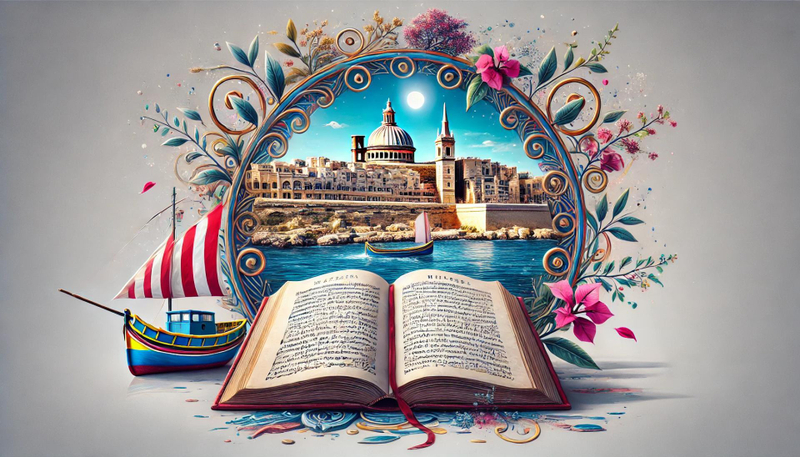Maltese poetry represents a rich and diverse literary tradition that intricately reflects the unique history, culture, and language of the Maltese islands. Nestled at the crossroads of civilizations in the Mediterranean, Malta has served as a melting pot of influences for centuries.
This vibrant blend of cultural currents—from the early Phoenicians and Romans to the Arabs, Normans, and later European powers such as the Spanish, Knights of St. John, French, and British—is vividly expressed in its poetry.
The Language of Maltese Poetry
Central to the allure of Maltese poetry is its distinctive linguistic makeup. Maltese, a Semitic language infused with substantial Romance and English influences, stands alone as the only Semitic language written in Latin script. This linguistic hybridity imbues Maltese poetry with a unique cadence and melodic quality, providing poets with an expressive canvas to delve into themes of identity, love, resilience, and the nuanced complexities of Maltese culture.
The rhythmic flow and rich phonetics of Maltese enable poets to evoke vivid imagery and evoke deep emotional responses from their readers. Whether through traditional forms or innovative experiments, Maltese poets harness this linguistic diversity to craft verses that resonate with both local nuances and universal themes.
This language's adaptability and flexibility have allowed Maltese poetry to evolve continuously over time, from its early oral traditions to its flourishing as a literary language in the 19th century and its ongoing experimentation in contemporary contexts. Today, Maltese poetry remains a vibrant testament to the enduring power of language to shape cultural identity and artistic expression.
Historical Roots
The roots of Maltese poetry extend back to the medieval period, where its early manifestations were predominantly oral, revolving around religious and folk themes. However, it was the 19th century that marked a transformative era for Maltese literature. As Malta underwent a cultural renaissance, writers embraced Maltese as a literary language, elevating poetry to a potent instrument for articulating national identity and aspirations for independence.
The shift from oral traditions to written forms allowed Maltese poets to capture the essence of Malta's historical narrative and cultural evolution. Themes of resilience, cultural heritage, and the island's unique geopolitical position in the Mediterranean resonated deeply in these poetic expressions. This period also witnessed a burgeoning interest in exploring Maltese identity through the lens of literature, setting the stage for a rich tapestry of poetic exploration that continues to evolve today
.
From the medieval chants echoing through centuries to the modern reinterpretations of Maltese poets, this historical journey underscores the enduring significance of poetry in shaping Malta's cultural heritage and collective memory.
Modern Maltese Poetry
The 20th and 21st centuries have witnessed a remarkable evolution in Maltese poetry, marked by a dynamic interplay of modernist and postmodernist influences. Contemporary Maltese poets boldly explore a diverse spectrum of themes, ranging from intimate personal reflections to pressing social and political issues. This era of poetic innovation reflects Malta's ongoing socio-cultural transformations and global interconnectedness.
Experimentation with form and language is a hallmark of contemporary Maltese poetry, ensuring its relevance and vibrancy in a rapidly changing world. Poets harness new literary techniques and narrative structures to evoke profound emotional responses and challenge conventional boundaries.
The enduring appeal of Maltese poetry lies in its ability to encapsulate the complexities of Malta's identity and heritage. Whether through the evocative imagery of traditional verse or the avant-garde expressions of modern works, each poem offers a unique lens into Malta's cultural mosaic and historical narrative.



